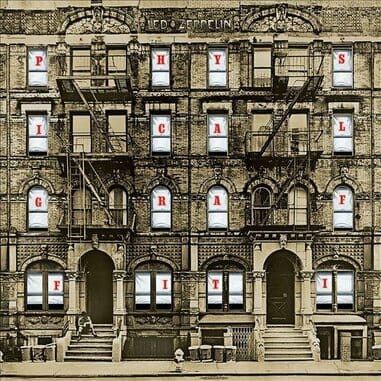Led Zeppelin: Physical Graffiti Reissue

Remastered Album Score: 9.5
Deluxe Material Score: 4.5
Led Zeppelin’s sixth album, 1975’s Physical Graffiti, is the greatest double-LP in rock history—a sprawling, ambitious masterwork that showcases all of the band’s obvious (and not so obvious) strengths.
But it could have easily been a trainwreck. Exhausted from their expansive Houses of the Holy tour, the hard rock legends nearly imploded during the album’s initial November 1973 sessions, with bassist/keyboardist John Paul Jones on the verge of quitting. The quartet—Jones, guitarist-producer Jimmy Page, frontman Robert Plant, drummer John Bonham—eventually regrouped the following year at their infamous Headley Grange rehearsal space, whipping up 55 minutes of music in the form of eight explosive new epics. Stuck with more material for one album but not enough to flesh out two, they decided to pilfer their vaults, padding out the tracklist by reworking a series of fascinating—and occasionally bizarre—leftovers from the previous four years.
-

-

-

-

-

-

-

-

-

-

-

-

-

-

-

-

-

-

-

-

-

-

-

-

-

-

-

-

-

-

-

-

-

-

-

-

-

-

-

-








































